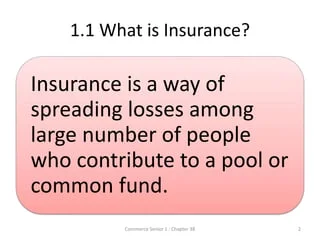Pacific Prime Fundamentals Explained
Pacific Prime Fundamentals Explained
Blog Article
Excitement About Pacific Prime
Table of ContentsPacific Prime Can Be Fun For EveryoneThe 7-Minute Rule for Pacific PrimeFacts About Pacific Prime RevealedPacific Prime Fundamentals ExplainedThe Definitive Guide to Pacific Prime

This is because the information were collected for a duration of solid economic efficiency. Of the approximated 42 million people who were without insurance, all but concerning 420,000 (about 1 percent) were under 65 years old, the age at which most Americans become eligible for Medicare; 32 million were grownups in between ages 18 and 65, about 19 percent of all grownups in this age group; and 10 million were youngsters under 18 years old, regarding 13.9 percent of all youngsters (Mills, 2000).
These estimates of the variety of persons uninsured are created from the annual March Supplement to the Existing Population Study (CPS), carried out by the Demographics Bureau. Unless or else noted, national estimates of people without wellness insurance and proportions of the populace with various sort of coverage are based on the CPS, one of the most widely used source of price quotes of insurance policy protection and uninsurance prices.
All about Pacific Prime

Still, the CPS is specifically beneficial since it creates annual price quotes reasonably promptly, reporting the previous year's insurance policy coverage estimates each September, and due to the fact that it is the basis for a regular collection of quotes for greater than 20 years, allowing for evaluation of patterns in protection in time. For these factors, in addition to the comprehensive use of the CPS in various other research studies of insurance protection that exist in this report, we depend on CPS quotes, with limitations kept in mind.

The estimate of the variety of uninsured individuals expands when a populace's insurance standing is tracked for several years. Over a three-year duration beginning early in 1993, 72 million individuals, 29 percent of the united state populace, lacked protection for at the very least one month. Within a single year (1994 ), 53 million individuals experienced a minimum of a month without protection (Bennefield, 1998a)
Six out of every 10 without insurance adults are themselves employed. Working does boost the probability that one and one's family participants will certainly have insurance coverage, it is not a guarantee. Also participants of family members with two full-time wage earners have virtually a one-in-ten possibility of being uninsured (9.1 percent uninsured price) (Hoffman and Pohl, 2000).
Pacific Prime - Truths
New immigrants account for a considerable percentage of people without medical insurance. One evaluation has actually associated a considerable section of the recent development in the size of the U.S. without insurance population to immigrants who showed up in the nation between 1994 and 1998 (Camarota and Edwards, 2000). Recent immigrants (those that pertained to the United States within the past four years) do have a high rate of being without insurance (46 percent), but they and their kids represent simply 6 percent of those without insurance policy nationally (Holahan et al., 2001).
The relationship between medical insurance and access to care is well established, as documented later in this chapter. The connection between health insurance and health end results is neither straight neither easy, a substantial medical and health services study literary works links wellness insurance policy coverage to improved accessibility to care, far better high quality, and improved individual and populace health status.
Degrees of analysis for taking a look at the effects of uninsurance. It concentrates specifically on those without any kind of health insurance policy for any size of time.
All about Pacific Prime
The problems dealt with by the underinsured are in some respects comparable to those dealt with by the without insurance, although they are typically much less severe. Health insurance, nevertheless, is neither required neither enough to get access to clinical services. The independent and straight impact of health insurance policy coverage on access to wellness services is well established.
Others will certainly obtain the wellness treatment they need also without medical insurance, by spending for it out of pocket or seeking it from companies who provide care free or at highly subsidized prices. For still others, medical insurance alone does not guarantee receipt of care because of various other nonfinancial barriers, such as an absence of health and wellness care carriers in their neighborhood, minimal access to transport, illiteracy, or linguistic and cultural distinctions.
The Ultimate Guide To Pacific Prime
Formal study regarding without insurance populaces in the United States dates look at here to the late 1920s and early 1930s when the Board on the Expense of Healthcare produced a collection of reports regarding financing physician workplace visits and hospital stays. This concern ended up being salient as the numbers of medically indigent climbed up throughout the Great Depression.
Report this page